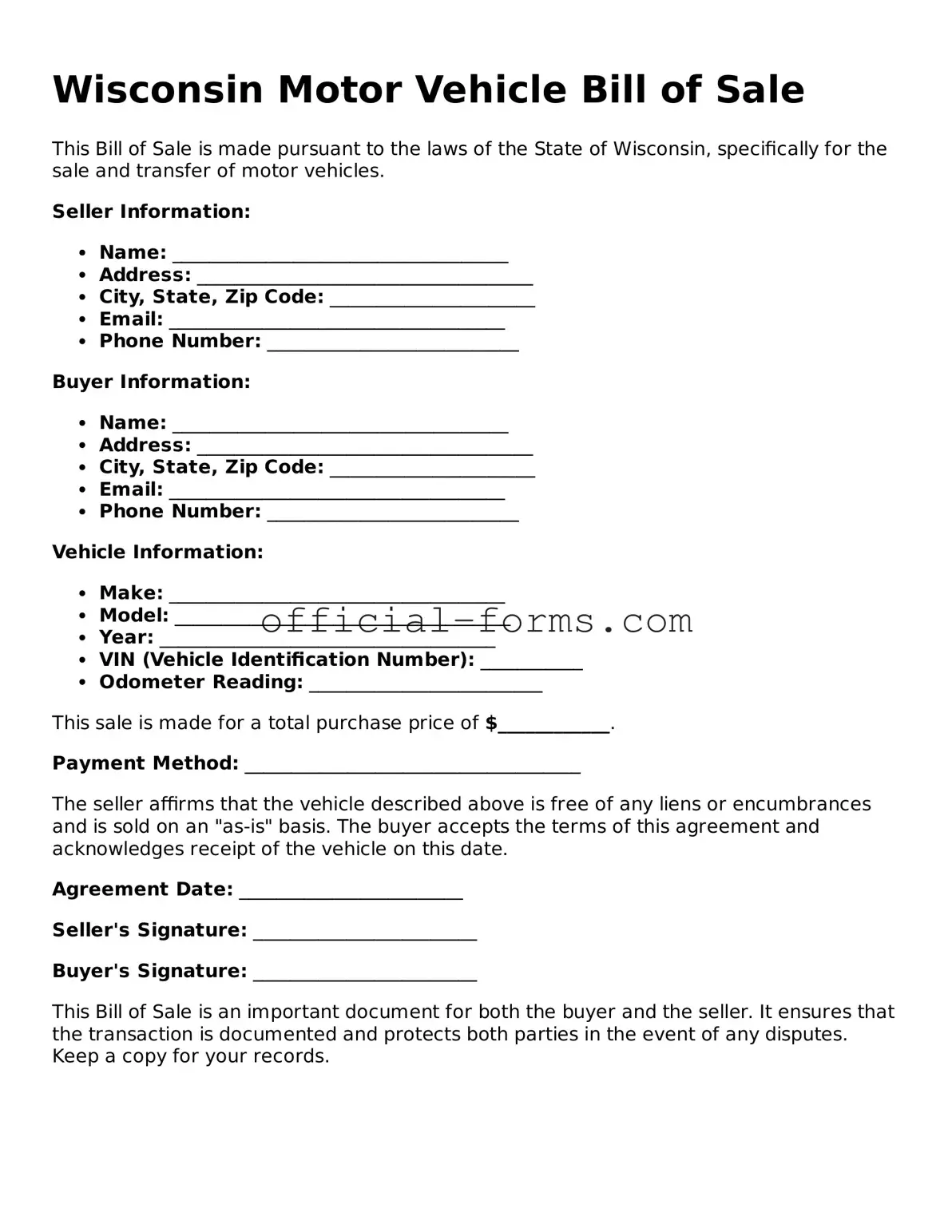Official Wisconsin Motor Vehicle Bill of Sale Document
The Wisconsin Motor Vehicle Bill of Sale form is a legal document that records the transfer of ownership of a vehicle from one party to another. This form serves as proof of the transaction and includes essential details such as the vehicle's make, model, and identification number. Having a properly completed bill of sale can help protect both the buyer and seller in the event of future disputes.
Open My Motor Vehicle Bill of Sale Now
